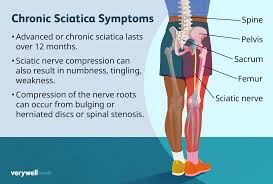
Introduction to Sciatica
Sciatica is a common condition that affects many individuals, causing pain that radiates along the path of the sciatic nerve, which runs from the lower back through the hips and buttocks and down each leg. Understanding sciatica is crucial as it can significantly impact one’s quality of life and daily activities. With the rise in sedentary lifestyles and aging populations, awareness and education about sciatica have become more important than ever.
Causes and Symptoms of Sciatica
Sciatica often occurs when a herniated disk, bone spur on the spine, or narrowing of the spine compresses the sciatic nerve. Common causes include degenerative disc disease, spinal stenosis, and spondylolisthesis. Symptoms can vary widely but typically include:
- Sharp pain in the lower back or buttocks that may radiate down the leg
- Numbness, tingling, or weakness in the leg or foot
- Increased pain with prolonged sitting or standing
- Difficulty moving the leg
As the condition progresses, it may lead to more severe symptoms, including loss of bladder or bowel control, which requires immediate medical attention.
Diagnosis of Sciatica
Diagnosing sciatica generally involves a physical examination and taking a detailed medical history. Healthcare professionals may recommend imaging tests, such as X-rays, MRI, or CT scans, to identify underlying conditions causing nerve pressure.
Treatment Options for Sciatica
Treatment for sciatica can vary based on the underlying cause and severity of the symptoms. Initial treatment typically includes:
- Rest and physical therapy
- Over-the-counter pain relievers, such as ibuprofen or acetaminophen
- Hot or cold packs to reduce inflammation and relieve pain
In more severe cases, healthcare providers may recommend prescription medications, corticosteroid injections, or even surgical options if there is significant nerve compression.
Conclusion and Future Outlook
Understanding sciatica is essential for effective management and treatment. As awareness about spinal health and the importance of maintaining an active lifestyle grows, it is expected that preventive measures will become a focal point in public health conversations. Individuals suffering from sciatica should seek professional guidance for personalized treatment plans to enhance their quality of life.

